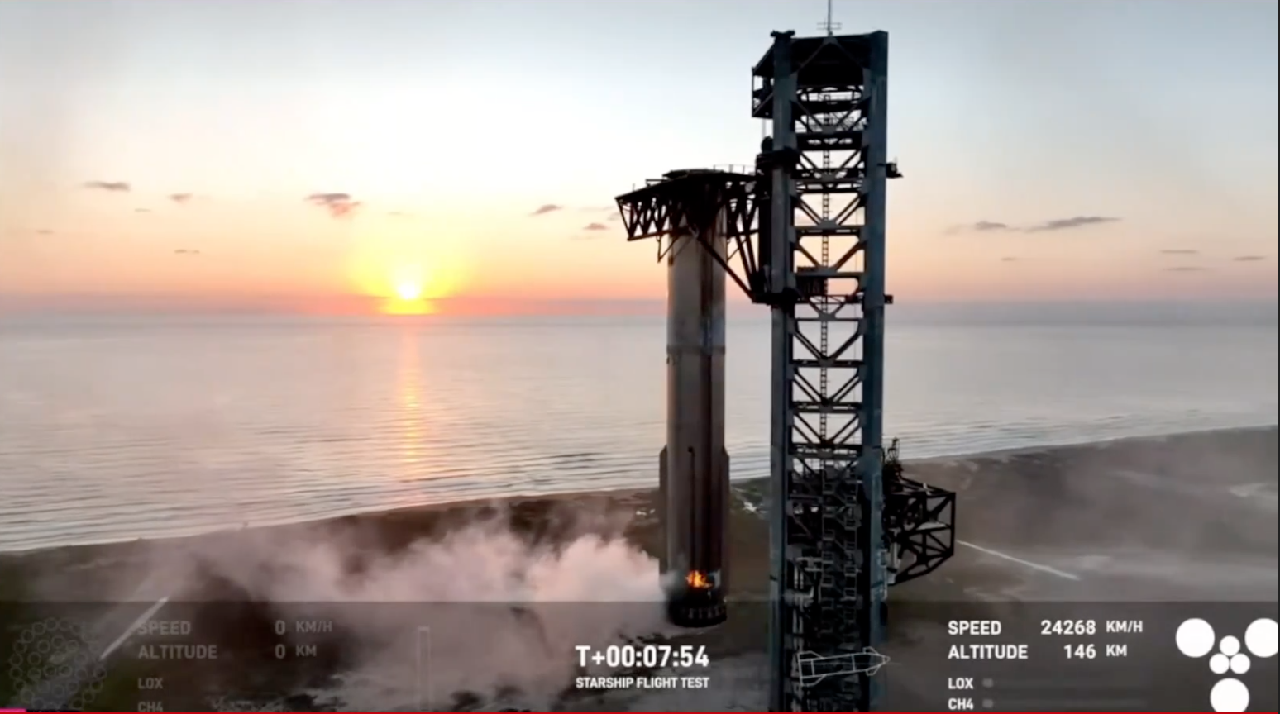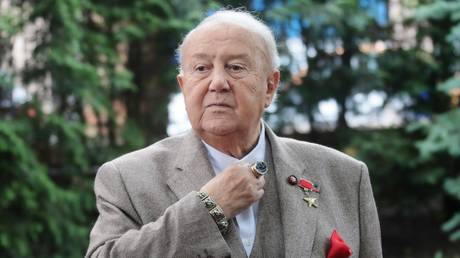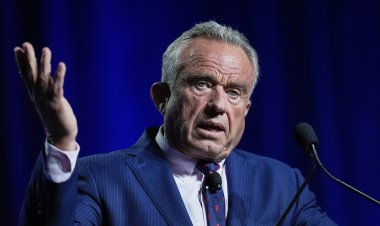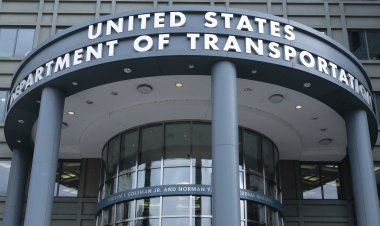Mechanical 'chopsticks' snag Starship's booster
The description covers the recent event where a Starship booster was successfully captured using mechanical 'chopsticks.'

The Super Heavy booster, measuring 121 meters in height, took off at sunrise from a site in southern Texas, near the Mexican border. Following its ascent, it made a controlled descent back to the launch pad, where large mechanical "chopsticks," dubbed "Mechazilla" by SpaceX CEO Elon Musk, successfully caught the descending booster.
The launch occurred at 7:25 a.m. local time, under clear weather conditions. As the booster returned to the pad, the upper stage of the Starship was projected to splash down in the Indian Ocean shortly thereafter.
In June, SpaceX marked a significant milestone with its first successful Starship splashdown, aligning with Musk’s vision of eventually transporting humans to Mars. Since its introduction by Musk in 2017, the Starship has experienced multiple explosions during prior test phases.
During its reentry into Earth’s atmosphere, the Starship showcased a stunning visual: onboard cameras documented a pinkish-purple glow from superheated plasma enveloping its Earth-facing side and steering flaps, a result of hypersonic friction.
The side of the ship exposed to heat is equipped with 18,000 heat-shielding tiles, which have seen enhancements since the June test, where tile damage upon reentry posed challenges.
NASA is keeping a close eye on these developments, as an adapted version of Starship is slated to function as a lander for crewed lunar missions as part of its Artemis program later this decade.
According to SpaceX, its engineers "spent years preparing and months testing for the booster catch attempt, with technicians pouring tens of thousands of hours into building the infrastructure to maximize our chances for success."
Monitoring teams ensured that "thousands" of criteria were checked for both the vehicle and the launch tower prior to executing the catch of the returning Super Heavy booster.
In the event that conditions were not ideal, the booster would have been guided to a splashdown in the Gulf of Mexico, consistent with previous tests.
However, once cleared for landing, the booster slowed from supersonic speeds, and the "chopstick arms" successfully secured it.
This innovative catch-landing strategy marks a significant step forward in SpaceX's ambition to develop a fully reusable rocket system capable of transporting larger payloads into orbit, assisting NASA with human lunar missions, and ultimately facilitating trips to Mars.
Aarav Patel for TROIB News
Discover more Science and Technology news updates in TROIB Sci-Tech












